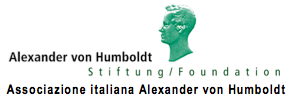under
the patronage of
and with the financial support of |
 |
 |
 |
 |
 |
 |
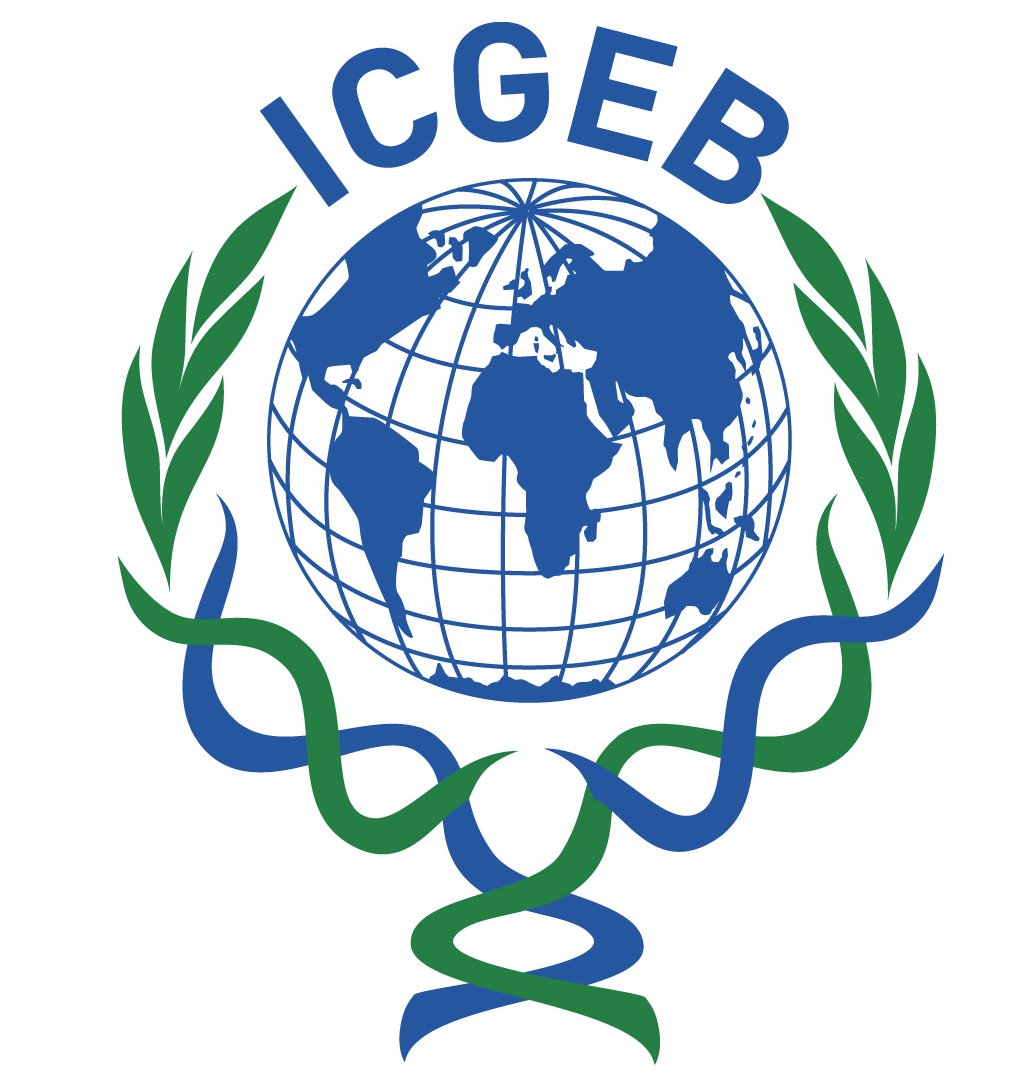 |
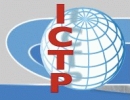 |
 |
with the
participation of |

|
 |

|

|
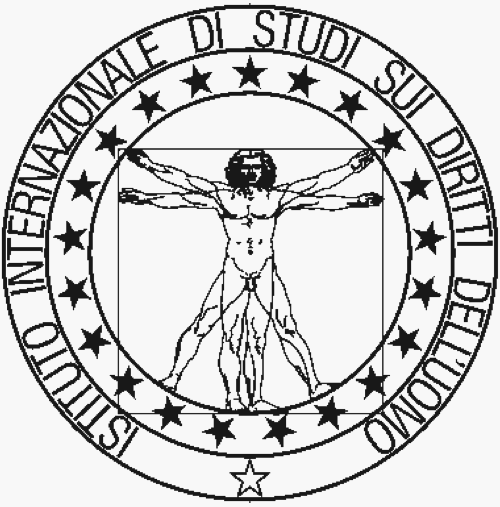
|
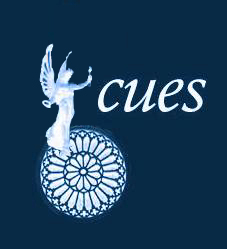 |
and COMITATO
SCIENZE IN DIALOGO
|
|
ABSTRACTS
Elena
Agazzi
Measure of
things and measuring of the world in scientific exploration and
literature
In
1992 German writer W.G. Sebald published a poem meant to be a lyrical
triptych entitled Nach der Natur (engl. After Natur, 2002). This
extremely fascinating oeuvre covers the span of time between XVth and
XXth Century while dealing with the life of German painter Matthias
Grünewald, crossing through Georg Wilhelm Steller's biography
the
expeditions of Danish explorer Vitus Bering, and ending with a Sebald's
autobiographical fragment where the author leans his consciousness from
the end of World War II to present time. Thus After Nature seems
apparently to be a tribute to painting, to scientific genius - blended
with the adventure of discovering unknown worlds -, and to the feeling
of historical time matured by Sebald's lyrical I. This poem represents
indeed the first step of the writer's meditation upon the "natural
history of destruction"; a concept widely discussed in his lectures
delivered in Zurich in the late autumn of 1997 and printed in the
volume Luftkrieg und Literatur (1999). A short analysis of this concept
will be offered as an introduction to the paper I am presenting during
the conference. Actually my attention will mainly concentrate on the
figure and enterprise of Vitus Bering, around whom Austrian writer
Konrad Bayer plotted in 1965 a prose entitled Der Kopf des Vitus
Bering. As a pastiche of historical and cultural references concerning
the most important scientific explorations carried out in the Pacific
Ocean between the coasts of Alaska and the Peninsula of Kamchatka,
Beyer's experimental work mostly deals with the horror of extermination
and devastation brought about by any act of conquest. But the end of
Bering - his ship was swept away by a tempest that killed the captain
and many mariners - witnesses that all of this may only happen at the
cost of solitude and at the risk of life. Beyer's insistence on Vitus
Bering's "head"6 is an homage to the concept of genius, but also to the
place where Enlightenment and Obscurantism play their match. In my
paper I will also refer to Daniel Kehlmann's book Die Vermessung der
Welt (2005) devoted to the figures of Alexander von Humboldt and Carl
Friedrich Gauss, the mathematician and astronomer who joined an
impressive international success. Therefore "measure of things" and
"measuring of the world" are the main themes of my contribution.
TOP Back to program
Thomas
Bach
Botany
between speculation and experience: Franz Joseph Schelver's criticism
of Linnaeus
At
the beginning of the 19th century Linnaeus's concept of plant sexuality
was criticized by Franz Joseph Schelver. This criticism is a good
example in order to explain the position of the botany between
speculation and experience and, in this case, gives information not
only about the current dialog between botany and philosophy at that
time, but refers also to the criticism of Linnaeus system of plant
sexuality formulated by the English Anti-Sexualists in the 18th
century, a criticism, that now in the beginning of the 19th century was
formulated once again from the natural philosophy, but under different
signs.
The English
Anti-Sexualists of the 18th century
criticized the missing empirical safeguard of the plant sexuality
propagated by Linnaeus in particular. With that they found a central
point, because Linnaeus bases only on the arguments of his precursors
and their observations and experiments mostly. His argumentation is
based on the analogy of animal and plant and is even rather deductive
and follows scholastic models. One does not find an own or new
experimental proof of the opinion represented by himself.
Relevantly
in this context is for instance the dissertation Sponsalia plantarum
which was published in 1749 in the first volume of his Amoenitates
academicae. Linnaeus begins there with the enumeration of different
authors (for example Millington, Grew, Camerarius etc.), who pronounced
themselves in favour of the sexuality of the plants. As evidence of his
contention Linnaeus does not present, however, any new experimental
proofs. William Smellie therefore states in his contribution On the
Sexuality of Plants in the first edition of the Encyclopaedia
Britannica (1771): "Upon the whole, we must conclude, that the
distinction of sexes among vegetables has no foundation in nature: or,
at least, that the facts and arguments employed in support of this
doctrine, when examined with any degree of philosophical accuracy, are
totally insufficient to establish it." Smellie therefore already sees
Linnaeus's theory in his Philosophy of Natural Philosophy published in
1790 as "derived from a mistaken analogy".
This
analogy of
plant and animal is also the starting point of Schelvers criticism
(Kritik der Lehre von den Geschlechtern der Pflanzen, 1812), which,
however, is published twenty years after Smellie. But now the
arrangement shows the difference of the two ways of life and speaks in
this respect against the transfer of the sexuality from the animal onto
the plant.
TOP
Back to program
Wieslaw Bogdanowicz
THE PAST OF
LIFE: MOLECULAR GENETICS AND THE FUTURE OF PALEONTOLOGY
Under
certain conditions small amounts of Deoxyribonucleic Acid (DNA) can
survive for long periods of time and may be used as substrates in the
Polymerase Chain Reaction for the study of phylogeny and population
genetics of extinct animals and plants. About 20 years ago, DNA
sequences were described from an extinct subspecies of the plains zebra
and an ancient Egyptian individual; what made these sequences
exceptional was that they were derived from 140- and 2,400-year-old
specimens. More recently, ancient DNA (aDNA) has been used to study
phylogenetic relationships of protists, fungi, algae, plants, and
higher eukaryotes such as extinct horses, cave bears, wooly mammoths,
flightless moa birds, and Neanderthals. In the past few years, this
approach has been extended to the study of infectious diseases in
ancient mummies from Egypt and South America; they suggested a butchery
pattern indicative of a human population under resource stress,
revealed dietary habits of ancient animals, and helped to understand
how climatic change impacts biological diversity. The permafrost in
Siberia and Alaska revealed DNA from eight species of mammals as well
as 28 families of trees, shrubs, mosses and herbs that populated the
Northern Hemisphere up to about 400,000 years ago. These results give
scientists unprecedented power to reconstruct ancient ecosystems and
track them through time. That is in sharp contrast to research based on
fossils, which only provide information about a particular petrified
animal or plant. However, the field of aDNA is regularly marred by
erroneous reports, which underestimate the extent of contamination
within laboratories and samples themselves. For example, aDNA in bones
of some primates has a tendency to show damage in a particular region,
resulting in misleading genetic data and mistaken conclusions about the
animals' origin. On the other hand, it appears that we can use damage
cause after death to examine how DNA damage occurs during life - a
completely unanticipated, and somewhat ironic result. Evidently, deeper
understanding of these processes and the effects of damage on aDNA
templates has started to provide a more robust basis for molecular
research. DNA sequencing of one of the mitochondrial genes of
mouse-eared bats in our laboratory allowed the comparison of aDNA
sequences (dating back to ca. 830 years before present) with those of
modern bats to assess their genetic relationships. Initial results have
revealed surprisingly complex population histories, and indicate that
modern studies may give misleading impressions about even the recent
evolutionary past.
TOP
Back to program
Hotimir
Burger
Man as the
creator of relations. On the example of Kierkegaard, Marx,
Plessner and Cassirer
Four
thinkers occupied with the problem of a man in different
perspectives
and horizons have tried to determine the existence and the nature
of a
man and his position in the world and history. They have all formulated
– we can suppose not knowing each other's statements - almost
identical
statements about the man as a being of relations.
In some way
I. Kant also did it. In his Anthropology, he finds that a man cannot
become aware of himself in an empirical way and not with the so called
internal sens, because he knows himself only as a phenomenon and not as
a noumenon. The man has, for his selfcognition, only the thinking that
enables him to track his spontaneity and his freedom as the foundation
of his self.
S. Kierkegaard, on the other hand, in his work
The sickness unto the death,
has
determined self of the
man in consequent words: «The self is the relation, which is
in the
relation to himself, or it is this in the relation, what is related to
himself.»
According to K. Marx (in German ideology) only
a man is in the relation to
the
external world, because only
for him a relation as a relation exists: «...the animal is
related to
nothing, because a relation as a relation for it does not
exist.»
H. Plessner (in The stages of the organic world and the man) comes to
an almost identical consclusion as Marx. He says: «For the
animal, a
corelation as a corelation does not come to its conscience, it stays
hidden from it. The animal, however, does stand in this relation, but
it doesn't acquire a conprehensible character.»
In the work of
E. Cassirer, this problem is incorporated in his philosophy of the
symbolic forms, but for him the specificity of human knowledge is the
discovery and the constitution of a new reality through the rise of
knowledge from a substantial level to the formal one. It even discovers
and constitutes the relation as a relation as a dimension of the human
reality
We can therefore ask: Did these insights open some new perspective and
a new horizon in the understanding of a man?
TOP
Back to program
Corrado
Corradi-Dell'Acqua
Neural correlates of egocentric and allocentric body reference frame
Neuropsychological
studies suggest that patients with left parietal lesions may show
impaired localization of parts of either their own or the examiner's
body, despite preserved ability to identify isolated body parts. This
deficit, called autotopagnosia, may result from damage to the Body
Structural Description (BSD), a visuo-spatial representation which
codes the spatial arrangement among parts of a standard body. The
studies reported in this presentation sought to investigate both the
functional properties and the neural underpinnings of the BSD.
Participants
were asked to assess which distance two body parts stimuli had on a
video display. Their responses were biased by the distance between the
two displayed parts have in the real body, in that the more the
depicted parts were distant in the real body the larger the error. This
effect shows that the task was not accomplished only relying on
scene-based properties of the video display, but also on pre-ordinate
information on the body structure. The paradigm was then reproduced
with participants taking different postures or having different height.
The results confirmed that the spatial information tapped in this task
does not rely on the distance among the parts of one's own body, but on
a model of the spatial relations among parts of standard body.
The
neural underpinnings of the BSD were investigated using fMRI.
Participants were shown a body part stimulus and were asked to judge
its spatial relation with another body part or a full body. The
posterior part of the intraparietal sulcus was found significantly more
active during these experimental conditions then when participants had
to assess (1) the spatial relation of the body part presented with
their own body or (2) the spatial relation between two non-body-part
stimuli.
These
results show that the posterior part of the IPS
processes specifically the information about spatial relationships
among parts of a standard body and thereby suggest that damage to this
area may underlie autotopagnosia.
TOP
Back to program
Gianfausto
Dell'Antonio
Models of
the real word: the language used by quantum mechanics to account for a
class of physical phenomena.
Quantum
Mechanics is a model which has been constructed to account for a class
of experimental outcomes which were obtained at Planck scale;
like any
other model, there is no pretense to understand
"the real world".
It has many
facets and correspondingly several languages are used.
On
one hand there are practical applications of the formalism and
verification of the predictions of the model; they are very
impressive
within the range of phenomena to which the model is applied.
This is
true both on the scale of atoms and molecules and, on a more
macroscopic scale, in the physics of condensed
matter where it is
able to account for effects (superconductivity, surface
effects,
properties of nanostructures..) which are at the basis of most moden
technology. And recently it was recognized that Q.M. may have a major
influence in information theory.
This is the
very important
"practical side" of Q.M., computational and predictive. In its most
advanced form it makes heavy use of analytic and computational
techniques. Its language is pragmatical and it relies on "classical"
aspects of measuring apparatuses.
One the
other hand there is
"basic Q.M.", "wrapped" in a mathematical (or at least formal) language
which is not specific of Q.M.. In this respect its language
is part
of present day mathematics. In its most advanced research structure it
has reached a high degree of fragmentation.
Of course
there is a
large interface between this two aspects, a no-man-land of
approximations, of searching for exact solutions of approximate
equations and approximate solutions of exact equations, of blackboards
on which the atoms are circles and the interactions are lines, of a
world of evoking images and similarities, trying to
comunicate
intuitions in everydays language.
This brings
us to yet another
aspect of Q.M., which is perhaps the one for which it is known and
talked about and commented upon by the "general public".
Q.M. is an
extremely powerful instrument to organize our knowledge of
phenomena
which have an important role also in our technology, and at the same
time is a very refined mathematical construction which has
had much
influence in the development of modern mathematics. Therefore Q.M.
constitutes an important body of knowledge and is an essential part of
our representation of the world.
Still this
very important
structure has an intrinsic weakness which lays in the difficulty to
reconcile the axioms on which it is based (and the prescription for
making a correspondence berween its symbols and what one measures) and
the very definition of the act of observation in an actual experiment.
Since Q.M. provides at the same time a deterministic dynamics
and
probabilistic outcomes of a measurement it is bound to lead to
intrinsic difficulties in defining precisely what is an act
of
measurement (if one assumes that the observer is described within
quantum mechanics).
Teaching a
first course of Quantum Mechanics to
students and even more "explaining" quantum mechanics to a general
public is a formidabile exercise in unfolding a model
celebrating its
successes, stimulating the imagination of the audience and at the same
time giving a structure, avoiding oversimplifications, pointing out
difficulties and providing a solid base for practical use.
TOP
Back to program
Erhard Denninger
Chances of
peaceful settlement of conflicts between free and equal people. Some
critical remarks on the "theory of discourse".
1.
In multicultural or multireligious societies resolving of conflicts
more and more consists in producing compatibility of colliding
fundamental rights by legislative or administrative decision-making.
We
are asking for the qualitative preconditions which are to be complied
with, in order for proceedings to be considered
'legitimate'. The
decisive standards will be "rationality" and "procedural justice"
('fairness').
2. One of
the main principles of the "theory of
discourse of practical reason" (as it has been developed by J.Habermas,
K.-O. Apel, R. Alexy, A. Tschentscher and others), taken as a theory of
law, is the mutual generation of public and private autonomy
or, in
other words, of human rights and the sovereignty of the people
(Habermas). Alexy, moreover, calls it 'the basic theory of the
democratic state under the rule of law'.
Our
question is, whether this theory may serve better than only as a 'fine
wheather' theory.
3.
The ideal theory of discourse encounters three fundamental difficulties
when being used for law-making and law-justifying discourses ( e.g.
concretizing basic rights): the relativity of space and time (1), the
necessary limitation of the circle of participants (2) and the
limitedness of the "informal compulsion of the better argument"(3).
4.
Problems of the theory-of-discourse approach: Exclusion and inclusion
by already constituted communities of law; problems of being kept away
from discourse, and refusal of discourse.
5.
'Negotiation' instead
of 'discourse', and 'compromise' instead of 'consensus' are - from the
point of view of the ideal theory of discourse - "weaker" forms.
Nevertheless they still may lead to 'just' results, provided
that
procedural fairness will be guaranteed.
6. Between
the 'pure' ideal
discourse (which produces normative results of the highest degree of
possible generalization) and the use of brute force there exists a
number of intermediate stages on the scale from sheer force disguised
as law until to power fully justified by law. In the field of
International Law this can be exemplified by the scale of measures
provided for in Chap. VI and VII of the UN Charter.
7. An
ideal-typical conception in communication theory will try to determine
those intermediate forms within the categories of 'discourse',
'negotiation' and 'modus vivendi'.
8. In
conflicts of fundamental
rights and tolerance, which are caused and motivated by religious or
cultural differences, the ability and willingness to adopt the opposing
viewpoint are particularly underdeveloped. Therefore one of the
fundamental preconditions of a successful transition to a 'real'
discourse is lacking.
9. This
main problem of peacefully founding a
civil society Immanuel Kant had seen quite clearly when he accepted
even a "people of devils, provided they are able to reason". However,
the rationalist answer of the philosopher of the Enlightenment does not
reach far enough.
10.
Nowadays, negotiations and discourses about
generally acceptable contents of human rights guarantees must be
undertaken unceasingly and worldwide - but without any guarantee of
success.
Chancen
friedlicher Konfliktbewältigung unter Freien und Gleichen.
Kritische Anmerkungen zur Diskurstheorie.
1.
In zunehmendem Maße findet
Grundrechtskonkretisierung als legislative
und administrative Konfliktlösungs-Arbeit statt. Wir fragen
nach den
qualitativen Voraussetzungen, die erfüllt sein
müssen, damit die dabei
anzuwendenden Verfahren als "legitim" angesehen werden können.
Rationalität und Gerechtigkeit des Verfahrens und
seiner Ergebnisse
setzen die entscheidenden Maßstäbe.
2.
Die Diskurstheorie der
praktischen Vernunft ( J.Habermas, K.-O. Apel, R. Alexy, A.
Tschentscher) , insofern sie von der Gleichursprünglichkeit
von
Volkssouveränität und Menschenrechten bzw. von
öffentlicher und
privater Autonomie (Habermas) ausgeht, bietet sich dabei sogar als
"Basistheorie des demokratischen Verfassungsstaates" (Alexy) an. Wir
fragen, ob sie sich nur als "Schönwetter-Theorie" eignet.
3.
Drei
zentralen Schwierigkeiten begegnet die ideale Diskurstheorie, wenn sie
für Rechtsbegründungsdiskurse (z.B.
Grundrechtskonkretisierungen)
praktisch-politisch fruchtbar gemacht werden soll: der
Relativität in
Zeit und Raum, der notwendigen Begrenzung des Teilnehmerkreises und der
Begrenztheit des "zwanglosen Zwangs des besseren Arguments".
4.
Problematik des idealen diskurstheoretischen Ansatzes in
Bezug auf
Exklusion und Inklusion durch bereits verfasste Rechtsgemeinschaften;
Problematik der Diskursfernhaltung und der Diskursverweigerung.
5.
"Verhandlung" statt "Diskurs", "Kompromiss" statt "Konsens"
können als
diskurstheoretisch "schwächere" Formen bei "fairer"
Verfahrensgestaltung doch noch zu "gerechten" Ergebnissen
führen.
6.
Zwischen dem "reinen" idealen Diskurs (mit dem
höchsten
Universalisierungsgrad des normativen Ergebnisses) und der Anwendung
schierer Gewalt ( wenngleich in rechtssetzender Absicht) existiert eine
Mehrzahl von Zwischenstufen auf dem Weg von bloßem
Gewaltrecht zu
legitimer Rechtsmacht, was für den völkerrechtlichen
Bereich am
Beispiel der Kapitel VI und VII der UN-Charta gezeigt werden kann.
7.
Eine kommunikationstheoretisch-idealtypische Begriffsbildung
wird die
Formen dieses Zwischenreiches in den Kategorien Diskurs, Verhandlung
und Modus vivendi abzubilden versuchen.
8.
Bei
religiös-kulturell bedingten und motivierten Grundrechts- und
Toleranzkonflikten ist die Fähigkeit und die Bereitschaft zur
"Perspektiven-Übernahme", als einer der entscheidenden
Voraussetzungen
zum Übergang in einen „echten“ Diskurs,
besonders schwach entwickelt.
9.
Kant hat dieses Grundproblem einer friedlichen
Vergesellschaft mit
seinem Hinweis auf das "Volk von Teufeln, wenn sie nur Verstand haben"
klar gesehen, doch greift seine rationalistische Lösung
(epochenbedingt) zu kurz.
10.
Heute sind Verhandlungen und
Diskurse über konsensfähige Gehalte von
Menschenrechtsgarantien global
und unablässig, doch ohne Erfolgsgarantie zu führen.
TOP
Back to program
Nina A. Dmitrieva
From the
Epistemology to the Teaching about Man:
On the
'Anthropological Turn' in Russian Neokantianism
From
the very beginning of their Odyssey on labyrinthes of Neokantian ideas
the Russian disciples of Cohen and Natorp considered the doctrine of
Marburg Neokantianism to be "the philosophy of humanism and
enlightenment" (Eug. Spektorsky).
The fact of
incompleteness of the
"classical" Enlightenment in Russia both in the sphere of philosophy
and in sphere of education has determined the most important tasks in
the activity of Russian Neokantians: not only teaching of
philosophizing, but also formulating of some general theoretical
principles of an 'applied philosophy' - pedagogics and then psychology.
It should result with necessity - and has resulted - in setting of a
problem of man.
The other
fact, which has determined the
'anthropological turn' in Russian Neokanianism, is the revolutionary
involvement of many Russian Marburgers. Kantian doctrine about autonomy
and activity of a cognizing subject proved to be for them a required
addition to the revolutionary ideas of social development apprehended
by them from Marxist's or anarchist's works, and even - paradoxically -
from Leo Tolstoy.
It is
possible to consider an article of Otto
Buek, a pupil of Cohen, as the earliest experience of a theoretical
interpretation of man in Russian Neokantianism. Almost at the same time
as he wrote his dissertation (1905) devoted to the proof of the
methodological-epistemological community of science and philosophy
through the analysis of Faraday's doctrine, he analyzed Tolstoy's
doctrine about non-resistance and found in it a new concept of man.
According to him the essence of man is "a continuously proceeding
revolution" understood as a method.
Boris
Pasternak's reflections
concerning Cohen's principle of "the unity of man" should be regarded
as the next landmark on a way of Russian Neokantianism to man. He
thought that this principle and the concept of man can be received only
from the point of view of 'Sprachphilosophie', "a critical
philosophical history of language's formations".
Another
basis of
the principle of "the unity of man" was put forward by Sergey
Rubinstein. A starting-point was for him Tolstoy's thesis: "the
knowledge of the people living an unfair, vain, dissolute life cannot
be true". Rubinstein has found an explanation in Cohen's idea that the
knowledge is a result not only and not so much of intuition rather than
of construction, and the acts of a person on constructing an object
determine him, i.e. the subject's content. Therefore Rubinstein proves
"the unity of person" by a principle of the creative spontaneous action
according to which the person not only "reveals and manifests itself"
in his acts, but also "creates and determines itself" in them. The
science gives a basis for the social unity because it releases human
consciousness "from its subjective conditionality" and creates thereby
"a unified common world in which all people can understand each other
for the first time".
TOP
Back to program
Sergio Doplicher
"Mathematics,
First Principles in Modern Physics, and possible lessons"
XX century
Physics had two revolutions: Relativity and Quantum
Mechanics.
The two
theories appear nowadays as the most firmly established
conquests
of human mind in their respective original domains, cosmology
and atomic
or subatomic physics.
Yet the
extension of each to the other's domain, requiring a unified
theory
which embodies both, is an open problem.
If
gravitational forces do not play a role and can be disregarded,
(Special)
Relativity and Quantum Mechanics do meet in a physical
principle,
named Locality, most neatly formulated in the mathematical
frame of
noncommutative Operator Algebras. Rather surprisingly, it
implies by
itself most of the conceptual structure of Quantum Field
Theory,
notably the existence and uniqueness of the collection (group)
of all
internal symmetries, not visible directly as symmetries of the
observables,
but determined in a rigid way precisely by their
noncommutativity.
Such a group determines, via the Yang Mills theory,
the very
form of the fundamental interactions, as described by the
Standard
Model.
But no such
principle linking General Relativity and Gravitation to
Quantum
Mechanics is known. Yet the opposite extrema of their domains
actually
seem to touch each other in the real world: looking very far
at the
borders of the known Universe we see it as it was very long ago,
close to
the Big Bang, when its size was close to a point.
However,
taking into account both Quantum Mechanics and Classical
General
Relativity, we conclude that different spacetime coordinates of
an event
must obey Uncertainty Relations, best implemented, as in
Quantum
Mechanics, by Noncommutativity.
Thereby, as
Spacetime Geometry in the large is linked to gravitation
(and hence
to dynamics) by Classical General Relativity, its algebraic
structure
in the small (the precise form of Noncommutativity) is linked
to
Gravitation as well (and hence to dynamics), by Quantum Mechanics and
General
Relativity.
This
motivates recent researches on Quantum Field Theory on Quantum
Spacetime.
The natural mathematical frame ought to be the recent field
of
Noncommutative Geometry.
We will
comment also how the lesson of Quantum Mechanics teaches us
something
in general, about the meaning of knowledge and naturalism.
TOP
Back to program
Cinzia
Ferrini
Observation,
Law and Organism in Hegel’s Phenomenology.
A
recent trend in scholarship has stressed that Hegel criticizes the
logical procedures and metaphysical presuppositions of the working
scientists's activity of his time, taking issues with their lack of
awareness in using mental categories and with the alleged consistency
of their way of arguing. The editorial notes to the critical edition of
the Phenomenology retrace some of Hegel's contemporaneous scientific
sources for his objections to description and classification in natural
sciences, his appreciation of new developments in electricity and
chemistry, and his critical remarks on the attempt to fix laws for
organical forces (sensibility, irritability, reproduction) as well on
the scientific status of physiognomy and phrenology, all of which
elucidate his allusions in "Observing Reason". In addition, we will
show how Hegel took active part in the scientific debate of the time,
by publicly siding with some strands of contemporaneous natural science
against others. It has been claimed that, in contrast to his mature
system, in the Phenomenology Hegel's confrontation with the natural
sciences is essentially and necessarily critical, aiming to reveal the
partiality, one-sidedness, and inadequacy of various aspects or forms
of the cognitive approach to the world typical of the natural sciences,
as part of Hegel's dissolution of all of consciousness's forms of
externality. In some cases, however, we will show how Hegel supports a
debated scientific position by providing it with philosophical
justification and foundation, for the phenomenological standpoint
allows Hegel to reconstruct the genesis and functions of scientific
theories within figures of consciousness which are also necessary and
irreplaceable advances toward the concept of absolute knowing). What is
more, our analysis reveals that when Hegel: 1. questions the validity
of a law-like fixed quantitative scheme, whether presented by a working
scientist or a speculative philosopher of nature; 2. vindicates
quality, fluidity, dynamical process, purposiveness, and contingency
for genuinely knowing organic existence; 3. reacts against the
inessentiality, indifference and formality of quantitative schemes
which cannot account for relationships or transitions of qualities; 4.
and, finally, criticizes the amount of imagination and arbitrareness
that lies behind those attempts, he does so not only on the
philosophical basis of accounting for self-differentiating and
self-maintaining independent natural individuals but also on the
natural-scientific reasons and concerns of modern experimental research.
TOP
Back to program
Lech
Garlicki
Rights and
Citizenship. European Human Rights Law - Universalism v. Citizenship
1.
The human rights instruments remain quite diversified in the
modern
world. While their common function is to protect individual rights and
liberties irrespective of nationality and/or citizenship, this
"universalizing function" is sometimes modified by traditional
understanding of a "national state". In brief, there are some basic
rights and liberties that must be granted to "everyone", but there are
also some other rights and liberties that may be reserved for nationals
only or, at least, nationals may enjoy a privileged position in
exercise of those rights. The latter group enhances, first of all,
political rights and, to some extent, certain social and economic
rights.
2.
The European Convention on Human Rights had been
drafted as an instrument protecting individual rights of "everyone
within the jurisdiction" of the Contracting States. Hence, in
principle, nationality/citizenship criterion is irrelevant and, in
addition, Article 14 of the Convention prohibits discrimination based
on "national origin". However, the written text of the Convention (e.
g. Article 16, Article 3 of the Protocol 4, Article 1 of the Protocol
7) as well as the case law of the ECtHR leaves some room for
differentiation of the position of "aliens" or "unlawfully resident
aliens".
3.
The written text of the Convention addresses
mainly rights and liberties of personal and political nature and, at
least in regard to the former, it is clear that no classifications
based on nationality are permitted. Once, however, the case-law of the
ECtHR entered the field of social and economic rights, the
nationality/citizenship criterion had to be discussed in a new
perspective. The same applies to the so-called "positive obligations"
of the State.
4.
Another challenge to the universalism of
human rights may result from the doctrine of the national "margin of
appreciation". It allows for some regional/national variations in the
exercise of certain individual rights, particularly in the area of
so-called "cultural margin of appreciation".
5.
Nevertheless,
the very existence of the Convention (and of the Court) has contributed
towards elimination of citizenship-based-classifications on the area of
individual rights and liberties. On the one side, it imposed on the
Member States an obligation to respect and to implement the universal
standards of the Convention. On the other hand, the Convention has
served as an attractive reference for many "new democracies" in their
process of constitution-writing.
TOP
Back to program
Mauro
Giacca
Can we
regenerate the human body? At the frontiers of biology and medicine
Certainly
the most common and yet one of the most intriguing characteristics of
most biological organisms including all mammals is their finite life
span. While we live most of our lives in very good health and with a
high level of independence, we experience a marked morbidity
compression toward the end of our life. Aging is commonly characterized
as a progressive, generalized impairment of function, resulting in an
increasing vulnerability to environmental challenge and a growing risk
of disease and death. It is also usually accompanied by a decline in
fertility. Thus, aging is associated with major age-related losses in
Darwinian fitness, posing the puzzle as to why it has not been more
effectively opposed by natural selection. Indeed, it appears remarkable
that "after a seemingly miraculous feat of morphogenesis, a complex
metazoan should be unable to perform the much simpler task of merely
maintaining what is already formed" (G. Williams, 1957).
It appears
now progressively clear that aging might be biologically controlled by
the progressive loss of capacity of tissue self-regeneration and
repair. This capacity is proper of a subset of undifferentiated cells,
the so called stem cells, which are able to both proliferate and
differentiate into different tissues. The most primitive stem cells are
those of the embryo itself, which by definition are totipotent since
they can give rise to any tissue of the growing organisms. Further
during development, totipotency is lost and cells become progressively
committed toward specific lineages. Recent information indicates that
multipotent, and perhaps totipotent, stem cells might also persist in
various tissues in adult organisms.
The
exploitation of this
information is of paramount interest in the field of regenerative
medicine. Embryonic stem cells derived from embryos, embryonic stem
cells obtained through animal cloning and adult stem cells can thus be
used for tissue healing and regeneration of virtually all organs,
including heart, brain, liver, pancreas and eye. While this possibility
is tantalizing for medical applications, it still poses a number of
ethical queries, since for the first time in human history man is
allowed to toy with the very fundaments of human development.
TOP
Back to program
Vladimir
Glišin
Cloning: from Religion
to Science
Science and religion are
two most influential factors shaping any society.
Through history
decisions on human origin have been made sometimes on
science, sometimes in
ignorance, and sometimes in the absence of real
understanding. In the
New Testament for example we read: “And ye shall
know the truth, and the
truth shall make you free.” Beautifully said and
not more agreeable.
However, based on this assumption one can also read in the
Bible as follows: And
God said, Let us make man in our image, after our
likeness.... The Lord
God formed the man from the soil of the ground and
breathed into his
nostrils the breath of life, and the man became a living
being. Furthermore. And
the LORD God caused a deep sleep to fall upon Adam, and
he slept: and he took
one of his ribs, and closed up the flesh instead thereof;
And the rib, which the
LORD God had taken from man, made he a woman, and
brought her unto the
man.
Now the birth of
Jesus Christ happened this way. While his mother Mary was
engaged to Joseph, but
before they came together, she was found to be pregnant
through the Holy
Spirit........ an angel of the Lord appeared to him in a dream
and said,
“Joseph, son of David, do not be afraid to take Mary as your
wife, because the child
conceived in her is from the Holy Spirit.
Having for centuries
(millennia) imbedded in human mind the notion of a
supernatural creator of
anything living on our Earth it is then self
understanding that
one should not be surprised that human cloning is such a
highly contentious issue
where many have long and emotionally held views.
Whatever the value of
their moral teachings, the authors of the Bible did not
know that the Earth is a
planet in orbit around the Sun, that the genetic code
is carried by DNA
molecules, or that the work of the brain is carried out by
neurons. Unfortunately,
a large number of our fellow contemporaries do not seem
to be aware of the afore
outlined facts of life either.
However, living in the
era when scientists are reducing life to genes and when
molecular biology with
every other field of scholarship and science is the
least compatible with
spiritual belief, it has profound implications for
several critical
societal debates: what constitute human life, when life
begins, does human
spirit remain beyond scientific inquiry? Therefore, one must
evaluate the state
of the art of human cloning impartially, with utmost
scientific rigor,
objectively. Regardless of the fact that the cloning would be
performed for
reproductive or therapeutic purposes. We have to evaluate its
successful probability,
feasibility and also to take into account the
presently acceptable
moral and ethical grounds in order to distinguish what
the honest and realistic
hopes and, what the hypes are. Unfortunately, the
hypes still prevail.
TOP
Back to program
Ivan
M. Havel
Between
Cognitive Science and Phenomenology: Understanding Human Consciousness
Many
research themes in contemporary cognitive science are throwing new
light on classical philosophical issues of human mind and
consciousness. Moreover, and more importantly, they are opening new
possibilities of fruitful scholarly communication between philosophy
and science. On the philosophical side there has been a lot of work
done within the Anglo-American tradition of analytic philosophy.
However, it can be argued that the phenomenological tradition may be
even more relevant when human consciousness is at issue. In the
contribution I shall be concerned with the latter tradition that is
still somewhat less popular within the cognitive science community. In
recent studies of consciousness two different views are exposed, one
based on the first-person (phenomenal) perspective and the other based
on the third-person perspective (typical for the sciences).
I
shall briefly discuss two areas of study that may bring forth possible
contact spots between the first-person perspective and the third-person
perspective. One such area is neurophenomenology of the late Francisco
Varela and his school. Here phenomenological accounts of the structure
of experience and their counter parts in cognitive science are related
to each through reciprocal constraints. The interesting point of this
approach is the strong transdisciplinary interaction between
phenomenology (e.g. the present time experience), neuroscience
(dynamics of neuronal ensembles), and mathematics (non-linear dynamical
systems).
The second approach to be discussed focuses on human
subjective experience of complex episodic situations. Several
modalities of such experience may be identified (temporality,
spatiality, scene structure, plot, etc.). It appears that liminal or
threshold experiences of various modalities provide good examples of
contact spots between the first-person perspective and the third-person
perspective.
The following quotation may express the moral of
the contribution: "Every good student of cognitive science who is also
interested in issues at the level of mental experience, must
inescapably attain a level of mastery in phenomenological examination
in order to work seriously with first-person accounts." (Varela and
Shear, 1999).
TOP
Back to program
Daslav
Hranueli
In
silico Design of 'Un-Natural' Natural Products
Polyketides
and non-ribosomal peptides are very important compounds for the
pharmaceutical
and agricultural industries. Their biosynthesis involves
assembly
of simple chemical building blocks into complex chemical structures by
the
catalytic activity of polyketide synthases (PKS) or nonribosomal peptide
synthetases
(NRPS). There has been a lot of interest in the last few years in
generating
new compounds for the production of novel drugs by manipulating the
programming
of genes encoding these enzyme complexes in vitro (e.g. the idea of
combinatorial
biosynthesis). However, an important barrier to progress is that
most
changes made by in vitro methods result in very low yields or no
detectable
products. A possible solution to the yield problem would be
generation
of novel clusters by homologous recombination in vivo, because this
would
favour more closely related gene sequences and should reduce problems
caused
by non-functional or incompatible junctions between proteins. An
integral
generic program package, CompGen, is under development to model this
process
in silico. The heart of CompGen is a specially structured database that
connects
the biosynthetic order of synthase/synthetase enzymes to the sequences
of
the component polypeptides. The additional linkage to the gene sequences
allows
the integration of DNA sequence with product structure. The database
contains
sequences of the well-characterised PKS/NRPS clusters to act as
building
blocks for the production of novel products. It is easy to add custom
sequences
to the database. One function of the program is the ability to
generate
virtual recombinants between clusters. This can be done using a
recombination
model (with optional parameters) to predict sites for homologous
recombination
or by user defined recombination sites (e.g. to model in vitro
genetic
manipulation such as module replacement). The program predicts the
chemical
structure of the resulting 'un-natural' natural products and allows
them
to be inserted into a virtual compound database for molecular modelling
studies.
An optional 'reverse genetics' module analyses a given chemical
structure
to see if it could be produced by a novel PKS/NRPS synthesis cluster
and
suggests the DNA sequence of a suitable cluster based on building blocks
derived
from clusters contained in the data base. Overall, CompGen allows in
silico
generation of databases of novel chemical compounds that can be used for
in
silico screening using PASS or CDD technology. The other integral
generic
program
package, ClustScan, will recognise and annotate new gene clusters from
microbial
genome sequencing projects or in metagenomes of soil and/or marine
microorganisms.
TOP
Back to program
Eva
Kocziszky
The
mountains. Geography, geology and poetical imagination around 1800
The
discourse between poetry and geology can be exemplified in a special
way at its beginnings at the end of the 18th century. In
turn-of-the-century the influence of the natural sciences, of geology
and geography, the widespread reading of travel literature and the
popularity of maps led Stolberg, Goethe, Hölderlin and
Günderrode to a
new way of writing poetry. The experience of nature remained determined
not only by the poetics of the sublime; the poets were also looking for
an empirical, scientifically established observation of nature,
especially of mountain landscapes. In his travel diary (1786), Count
Stolberg mentions his struggle to break with this precast, generalising
view and to perceive the Alps in their empirical reality. Similar
remarks have been voiced by Goethe. More often than not the landscape
bars us from seeing it with our own eyes, therefore scientific
observations shall contribute to newly discover the sensuous presence
of nature.
In my
lecture I would like to outline the mountain
experience in poetry around 1800, primarily in Hölderlin's
works. There
are three aspects that will be taken into particular consideration. The
first aspect will be the question of the formation of the mountains in
prehistory, which at the same time raises the question of the origin of
culture. In this context we will discuss not only geological concepts
in their influence upon Hölderlin and Goethe, but also the
theosophical
conception of Joseph Görres, which in my view has played a
defining
part. As a second aspect I choose the romantic question of a
"theotopography". It will be discussed as a connection between
different mountain landscapes like the Himalayas, the Caucasus and the
Alps. The third part of my paper will compare the role of Alps with the
poetical function of the Etna in Hölderlin's Hymns. These two
mountains
have determined the poetical imagery of landscape by Hölderlin
and
exemplify the discourse of geology and poetry in a special richness.
TOP
Back to program
Katalin
Neumer
"The common
behaviour of mankind". On a wittgensteinian concept
("Die
gemeinsame menschliche Handlungsweise". Zu einem Wittgensteinschen
Begriff)
How
can a different worldview, an alien culture be understood? Concerning
this question two opposite ideas can be found in Wittgenstein's later
philosophy. On the one hand he keeps emphasizing that in lack of a
common system of standards there can be no arguments taken as valid by
both parties thus no rational discussion is possible between people
belonging to diverse worldviews. The attempted discussions are,
according to him, like religious controversies in which "each man
declares the other a fool and heretic" (OC 611, MS 176:74r). On the
other hand he refers to the "common behaviour of mankind" and the
"natural history of human beings" which, in Rudolf Haller's opinion,
can be taken as "worldview-transcendent grounds". In my talk an attempt
will be made to clear up the meaning of the first concept.
As a matter
of fact, I have already tackled this problem in an earlier paper:
"
'Die gemeinsame menschliche Handlungsweise'. Das Verstehen des anderen
in Wittgensteins Spätphilosophie". In: Katalin Neumer, Die
Relativität
der Grenzen. Studien zur Philosophie Wittgensteins (= Studien zur
Österreichischen Philosophie, ed. Rudolf Haller, vol. XXIX).
Amsterdam/Atlanta, GA: 2000, pp. 49-82.
Link of the
article:
http://www.phil-inst.hu/~neumer/honlap_htm/hauptseite/Neumer_2.pdf
At
that time, however, I had only the printed material and not the Bergen
Electronic Edition of Wittgenstein's writings at my disposal. Now I
intend to reconsider my earlier reading in the light of the whole
corpus and to offer a new interpretation.
TOP
Back to program
Julian
Nida-Rümelin
Gründe
und Lebenswelt
Das
Spiel des Gründe-Gebens und -Nehmens ist tief in unsere
Lebenswelt
eingelassen daraus resultieren für die Teilnehmer dieser
Lebenswelt
normative Verbindlichkeiten. Die normative Verbindlichkeit ist nicht
aus den Prinzipien und Kriterien einer bestimmten ethischen Theorie
ableitbar. Das Spiel des lebensweltlichen Begründens ist
selbst eine
Quelle der Normativität. Dies in Frage zu stellen oder
praktisch zu
hintergehen ist nicht ohne die bizarre Konsequenz möglich,
sich dadurch
selbst als verlässlichen Dialog- und Interaktionspartner
auszuschließen. Dennoch bedeutet die lebensweltliche
Verankerung dieser
normativen Verbindlichkeit nicht, dass diese keiner rationalen Kritik
unterzogen werden könnte.
Im ersten
Teil wird ein Verständnis
von Gründen entwickelt. Es zeigt sich dabei der notwendig
interpersonale Charakter von Gründen, aber ebenso, dass es
zwischen
theoretischen und praktischen Gründen keinen prinzipiellen
Unterschied
gibt. Insbesondere wird deutlich, dass praktische Gründe nicht
als ein
Komplex aus Wunsch und diesem eine praktische Richtung gebender
Überzeugung aufzufassen sind.Der zweite Teil
erläutert, dass die
Lebenswelt Kriterien der Adäquatheit für
Äußerungen und Reaktionen auf
Äußerungen vorgibt. Damit ist unsere lebensweltliche
Sprachpraxis
normativ konstituiert und bringt somit für ihre Teilnehmer
moralische
Verpflichtungen mit sich. Dass die primäre Quelle von
Normativität in
der lebensweltlichen Sprach- und Interaktionspraxis zu suchen ist,
führt aber nicht zum Verschwinden des kritischen Potentials
normativer
Ethik und zu einer bloß quietistischen Beschreibung unserer
Sprachspiele. Dies wird im dritten Teil unter Bezugnahme auf die
Notwendigkeit innerlebensweltlicher Kohärenz gezeigt. Denn
personale
Integrität verlangt nach Kohärenz diese zieht - wenn
in der Lebenswelt
etablierte Regeln miteinander kollidieren - Deliberationen
über diese
Regeln und ggf. deren Kritik und Anpassung nach sich.
TOP
Back to program
Ilza Pajeva,
Michael Wiese
MODELING OF
DRUGS: POSSIBILITIES, LIMITATIONS, EXAMPLES
The
process of drug discovery is time consuming and expensive. It takes
about 15 years for a drug to reach the general public and one in about
10 000 of the compounds prepared is ever used. According to the recent
data the average cost per marketed drug is about 500 million Euros.
Modern approaches in drug studies include computer-aided drug design
(CADD) which aims to optimize the process so that the cost and time for
the new drug development to be reduced. It aims as well better
understanding of the underlying phenomena of the drug action and their
relation to the drug structure.
The main
steps in the new drug
development will be shortly discussed to outline the right place of the
CADD methods. The basis of the ligand-receptor interactions will be
presented and the principle of complementarity illustrated on
particular examples. The main CADD approaches will be described
depending on the information available: (i) the 3D structure of the
target molecule is unknown; (ii) the 3D structure of the target
molecule is unknown, but there are data about the structures of related
or isofunctional proteins; (iii) the 3D structure of the target is
known. The approaches will be illustrated with particular results from
QSAR (Quantitative Structure-Activity Relationships) and modeling
studies of different drugs and compounds related to P-glycoprotein
associated multidrug resistance in tumor cells. The limitations will be
discussed in relation to alternative binding modes of the drugs.
-----------------------------------------
La
teoria dell'evoluzione è rappresentata oggi da un programma
di ricerca
composito, dotato di un "nucleo" centrale neodarwiniano esteso e di una
"cintura" di assunzioni ausiliarie in via di affinamento. Il dato
emblematico che leggiamo infatti negli sviluppi novecenteschi della
teoria dell'evoluzione è che si è dimostrato,
grazie all'opera dei
fondatori della genetica delle popolazioni - fra gli altri, Ronald A.
Fisher, John B. Scott Haldane, Sewall Wright e Theodosius Dobzhansky -
che la selezione naturale era un meccanismo corretto, e indispensabile
per comprendere la trasformazione delle specie, anche in assenza della
conoscenza esatta dei meccanismi di ereditarietà all'interno
degli
organismi. Oggi a quel nucleo vanno aggiunti altri "motori" di
cambiamento, come la deriva genetica, la migrazione e il complesso dei
fenomeni macroevolutivi che si manifestano su larga scala. Anche le
assunzioni ausiliarie della Sintesi Moderna - relative ai ritmi, ai
livelli e ai vincoli dell'evoluzione - sono in corso di trasformazione
e stanno transitando da una forma tendenzialmente riduzionista e
funzionalista tipica della "prima Sintesi" a una forma più
pluralista e
strutturalista che potremmo abbozzare come "nuova sintesi". Gli
sviluppi della genomica evoluzionistica, della biologia evolutiva dello
sviluppo e della paleontologia possono essere efficacemente inquadrati
in questa cornice. Ne risulta che è infondato parlare di
più teorie
dell'evoluzione o di un superamento dell'impianto esplicativo
neodarwiniano. Si prefigura piuttosto la corroborazione di quella
visione del processo evoluzionistico che Stephen J. Gould aveva
definito in modo suggestivo come "darwinismo esteso" o "pluralismo
darwiniano".
TOP
Back to program
Alberto
Piazza
DARWIN
AND MENDEL: THE STORY OF A MISSED CONNECTION
Gregor
Mendel provided half the foundations of modern biology. Charles Darwin
provided
the other half. For Darwin produced the first truly plausible theory
of
evolution “by means of natural selection”, an idea
which came
into
the world with the force of revelation. Darwin, who was his own best
critic,
perceived the two most important flaws in his evolutionary thesis.
First,
he had no plausible mechanism of heredity, nothing to convincingly
explain
how “like begets like” and yet give rise to
variations: in
fact
without biological variations natural selection cannot act. Secondly,
his
ideas
were unquantified. He was aware of his mathematical deficiency at a very
early
stage.
The
first of these great problems, the mystery of heredity, was solved
within a
few
years (1866). But although Mendel had many good friends, he did not
seem to
be
able to gain their serious attention. Darwin certainly did. He leaned
heavily
on the great geologist Charles Lyell, as well as on Thomas Henry
Huxley,
Joseph Hooker and many others at the same time supportive but sharp:
contrast
Mendel’s dismal correspondence with Carl Naegeli. So it was
that
Darwinian
evolution emerged as the great obsession of the late nineteenth
century
while Mendel’s genetics was left to become the science of the
twentieth
century.
Mendel’s
genetics and Darwin’s ideas on evolution fit together
beautifully.
Oddly, however, when Mendel’s ideas on heredity were first
rediscovered,
they were felt to be at odds with Darwin’s theory . The
problem
was (or was perceived to be) that Mendel’s rules were based on
patterns
of inheritance of simple characters which (in the modern terminology)
were
coded by single genes, of the kind “all or none”.
But Darwin
has
stressed that the characters of all organisms tend to change gradually,
step
by step, over many millions of years. The answer to this apparent
contradiction
now seems obvious and would have been obvious to Mendel, if he
had
lived long enough to be consulted. Mendel deliberately set out to study
very
simple, single-gene characters because these alone would give clear
results
that could be analysed statistically. But he also knew very well that
most
characters in most organisms do not have an all-or-none nature. Most are
in
modern terms “polygenic”, i.e. coded by a series of
genes which
cooperate
and interact. A polygenic character can change gradually as the
generations
pass simply by changing one gene at a time. So there is no
irresolvable
conflict. Indeed there is no conflict at all.
All
this became obvious during the first decades of the twentieth century
and by
the1940s
Mendel’s genetics was fully reconciled with
Darwin’s idea
of
evolution by natural selection. Such a reconciliation is known as the
“Modern
Synthesis” or “Neodarwinism”: it can
properly
be
seen as one of the intellectual triumphs of the past century even if its
true
significance seems under-appreciated, at least by non-biologists:
scientists
are usually more impressed by quantum theory and non-scientists are
more
impressed by their philosophical implications.
Mendel
made a thorough study of Darwin’s books. From his notes one
can
suppose
that he did not see any conflict between his theory and his own. But we
also
have no detailed knowledge of how Mendel understood the individual steps
of
Darwin’s theory, particularly the concept of descent with
modification.
Whatever the case, he was firmly against the Darwin’s
theory
of pangenesis, according to which new species arose through the action
of
the environment: and he (Mendel) was proven to be definitely right.
TOP
Back to program
Telmo
Pievani
From
Punctuated Equilibria to Evo-Devo: A Pluralistic Interpretation of the
Structure of the Theory of Evolution
Punctuated
Equilibria, Hierarchical Theory of Evolution and Evo-Devo will be
presented
as three case studies of a supposed extension of the neo-darwinian
structure
of the theory of evolution. This structure is well represented as a
progressive
“Scientific Research Program”, according to Imre
Lakatos’
standard definition. We currently see an extended neo-darwinian
hard-core
(variation, natural selection, genetic drift, migration and
macro-evolutionary
effects), surrounded by a protective belt of auxiliary
assumptions.
Our hypothesis is that these assumptions are passing from a
restrictive
frame (gradualism, geno-centric view, adaptationism) to a
pluralistic
frame (multiple patterns about rhythms, units and factors of
biological
evolution).
TOP
Back to program
Alexei
Smirnov
Neutrinos:
Discovering new physics world
Establishing
non-zero neutrino mass and mixing is one of the major
discoveries
in particle physics in the recent years.
Non-zero
neutrino masses and mixing are considered
as the
first direct evidence of new physics beyond the Standard model.
Phenomenological
consequences of this discovery as well as possible
implications
for fundamental theory will be presented.
Future
programs of research and possible developments of the
neutrino
technologies will be outlined.
TOP
Back to program
Emidio
Spinelli
Existence,
evolution, and order of the world in Hans Jonas: unanswered questions?
This
paper focuses on the text of a short but important conference held by
Hans Jonas at Columbia University (New York, 5 March, 1970). It seeks
to reconstruct his view about some important questions, which might be
defined 'metaphysical' from a specifically philosophical point of view,
but which derive in fact from a deep confrontation with perspectives
and solutions advanced by modern and contemporary physics as well as
life sciences. Taking as his starting-point - or even as an
indisputable datum, at least from Laplace, who is here his main
polemical target - the central role of the scientific enterprise (also
in its technological implications) and of a radically
materialistic-mechanistic explanation of the world and its evolution,
Jonas tries to show the inadequacy of this approach. His analysis
refers to the distinctive picture of physical reality provided by
recent, widely accepted models from thermodynamics, and especially from
the controversial concept of entropy, and also to the distinctive
epistemological status of biology. The biological side of contemporary
science appears to transcend any mechanistic and deterministic
perspective; according to Jonas, biology (or better a new 'philosophy
of biology') should take into consideration other factors, including,
for example, the principles of interest, of concern, of responsibility,
and, in a word, of spiritual factors, since all of these aspects are
decisive in order to clarify the boundaries and the exact components of
our organic life. Within this comprehensive perspective on our
humanity, we are clearly "questioning beings" and it thus becomes
legitimate to raise again questions about God, its existence, its
function within the evolution of the world and its order, while never
forgetting that any question of this kind is (and must remain) an
"unanswered question" - the object of (more or less risky)
philosophical hypotheses, though certainly not of proofs.
TOP
Back to program
Katepalli R. Sreenivasan
In the limit of vanishing viscosity
TOP
Back to program
Alice
Staskova
Der Dichter als
"transscendentaler Arzt"
Ausgehend von
Novalis´ Bestimmung der Poesie als der „große[n] Kunst der
Construction der transscendentalen Gesundheit“ sowie des Poeten als
„transscendentale[r] Arzt“ soll die Vorstellung des Schriftstellers als
eines Diagnostikers und Therapeuten der Menschheit bzw. Gesellschaft
verfolgt werden. Exemplarisch werden Wirksamkeitsstrategien untersucht,
die in seiner Ästhetik Friedrich Schiller entwarf. Kunsttheorie,
die sich an bestimmten propositionalen Formen des Wissens orientiert,
suggeriert hier eine zutiefst ambivalente Charakteristik des Kunstwerks
als pharmakon. Dieses Beispiel der nicht unproblematischen, dafür
aber desto spannenden Annäherung der Literatur bzw. ihrer
Bildlichkeit an die Wissenschaft und deren Begrifflichkeit stellt eine
mögliche Ausprägung der Beziehung zwischen Kunst und
gesellschaftlicher Praxis dar.
TOP
Back to program
Barbara
Tomasino, Peter H. Weiss, Gereon R. Fink
Action
Words in the Primary Motor Cortex
Processing
sentences or verbs describing actions has been shown to activate, in
addition to "classic" language areas, the motor and pre-motor cortex in
a somatotopic fashion. However, the role of M1 in tasks involving
action words remains controversial. "Embodied cognition" refers also to
mental simulation. Thus, processing action words might result in M1
activation because action words could trigger motor simulation. In a
fMRI study we investigated the influence of the secondary tasks (letter
detection versus explicit motor imagery) on the neural activity in M1
during the processing of motor and non-motor phrases. Subjects silently
read short motor and non motor-related phrases and performed a
secondary task (mental imager or letter detection). A differential left
M1 activity in the task by stimulus interaction with enhanced M1
activation for imagery in the presence of motor phrases (vs. non-motor
phrases) compared to letter detection of motor vs. non-motor phrases
was found. In another study, we investigated whether sub-threshold TMS
of the hand area of the left hemisphere may differentially modulate
subjects' performance during different cognitive operations using
identical action related verbs. Right-handed subjects silently read
hand-action-related verbs presented in the infinitive form (e.g., "to
screw") and performed three different tasks: (i) silent reading alone,
(ii) motor imagery, and (iii) frequency judgments. For control, TMS was
also delivered to the vertex. M1-TMS differentially modulated task
performance: there was a significant facilitatory effect of M1-TMS for
the imagery task only, with subjects responding about 10% faster
(compared to vertex-TMS). In contrast, response times for silent
reading and frequency judgments were unaffected by M1-TMS. The
"embodied cognition" theory in language, argues that we can understand
others' actions through the observation-execution matching system, thus
using our embodied experience of the world. In this context subjects
might process action words by mapping the representation of the
corresponding action word onto his/her motor representations,
simulating the corresponding movement.
TOP
Back to program
Federico Vercellone
Theologie und
Säkularisation der Schönheit in der deutschen
Frühromantik
Die deutsche Romantik zeugt von einer
tiefen Krise des Schönheitsideals, welches das späte 18. und
beginnende 19. Jahrhundert in nicht selten widersprüchlichen
Formen durchzog. Die Krise zeigte sich an Verweisen auf die
unvergängliche Aktualität jenes Ideals (das Schöne), die
sich indes als Bedürfnis nach etwas Unerreichbarem erwiesen,
von der Unmöglichkeit kündeten, sich im Hier und Jetzt der
Gegenwart das Bedeutungssystem der Schönheit zu eigen zu machen,
in dem weit mehr mitschwang, als eine bloß ästhetische
Motivation. Man könnte sogar behaupten, dass das umstrittenste und
schwächste der Transzendentalien, das Schöne, am Anfang des
deutschen Idealismus wesentlich mit zwei weiteren, weitaus
mächtigeren von ihnen, nämlich dem Wahren und Guten,
verknüpft und somit die antike Dimension der Schönheit, ihre
vorwiegend kosmische und erst in zweiter Linie künstlerische Natur
erneut unterstrichen wurde.
TOP
Back to program
Aldo
Venturelli
Current
frontiers between scientific knowledge and humanities. New perspectives
Some
of the main problems affecting the contemporary society present an
interconnection of several elements with a particular emphasis on the
cultural factors which play a key-role. If we consider problems as
ageing, climatic change and even the complex question of the relation
between Western and Islamic countries (and the list might well be
longer), we always find out these interrelated phenomena which are
difficult to be properly taken into consideration.
Even
the simple definition of such kind of cultural elements implies serious
difficulties as far as the traditional subjects and even the
interdisciplinary dialogue are concerned. For instance a foreign
languages expert could be hardly an expert of integration nor he could
become it by means of a simple dialogue with the sociologist, the
psychologist or the jurist.
The
problem we are dealing with implies the reorganization of the
traditional disciplinary structure which should be encouraged by means
of clarity of methods.
On
the basis of the experiences acquired by the German-Italian Centre
Villa Vigoni, the present contribution aims at illustrating some
operational opportunities in order to allow this disciplinary
reorganization between Humanities, Social Sciences and Natural Sciences.
TOP
Back to program
Wilhelm Vossenkuhl
Problems of
Distributive Justice
My
paper will offer a brief survey of the Rawlsian account of distributive
justice with special reference to the Difference Principle (DP). I will
argue that DP does not solve the problems it is meant to solve. The
main reason for its inaptness lies behind a lack of clarity in the
Rawlsian account of goods and values to be distributed. In order to
distribute goods we first have to clarify their nature. Due to their
nature they may be comparable, dispensable, indispensable,
incomparable, indivisible, divisible or else. The most interesting and
valuable goods like, e.g., individual liberty, equality, personal
integrity, safety etc., are both indispensable, and indivisible. Their
distribution cannot be handled like the distribution of divisible and
dispensable goods where inequalities can easily and directly be
compensated by, e.g., transfer payments. This lack of direct
compensations is a major obstacle if some of the most valuable goods
are not equally accessible by all members of a society. A second
obstacle occurs when we consider the unequal distribution of
indivisible goods like individual liberties and social equality caused
indirectly by unequal access to divisible goods like legal, educational
or health institutions. If those inequalities are to be overcome or at
least partly alleviated and lessened it has to be seen how these
divisible goods are valuated against the earlier mentioned indivisible
goods by different social groups. If, e.g., the least advantaged groups
value divisible goods like income, food and labour higher than
indivisible goods like equal access to social institutions it will be
hard to balance their interests and invest into an equal distribution
of the most fundamental indivisible goods in their own interest. At
this point paternalism lurks. A further problem arises under conditions
of negative economic growth where divisible goods have to be
redistributed in order to overcome the most immediate hardships of
inequality for the least advantaged social groups like, e.g.,
unemployed. The problem here is how a just distribution of losses is
possible. The paper tries to offer an account of distributive justice,
which can be applied to the difficulties mentioned.
TOP
Back to program
Stefano
Zamagni
Individuals
and Community: New Social and Economic Philosophy
There
are two different ways of understanding the relationship between the
economic - which we can broadly call market - and the social, spheres
that are confronting each other today.
On the one hand, there
are those who see the extension of the market and the logic of
efficiency associated with it as the solution to all social diseases.
On the other hand, there are those who see the advancement of the
markets as a threat to civil life and therefore fight to protect
themselves against it. The first view considers the enterprise as an
asocial institution. By engendering a distorted
interpretation of
liberal thought, this view isolates the social dimension as a separate
entity from the mechanics of the market, which is visualized as an
ethically and socially neutral institution. The market is
required to
be efficient, create wealth, and make the "pie" bigger and bigger.
Solidarity begins exactly where the market leaves off, providing
criteria for political action in order to divide the pie and share its
"slices" among individuals, or else intervening in those folds of
society that are still not covered by the market.
At the
opposite end of the spectrum, we find the approach that sees enterprise
as being essentially "antisocial." Members of today's "no global
movement" constitute the most visible expression of this ideology. Such
a vision has among its mentors authors such as K. Marx and K. Polanyi.
The market is a place where the mighty exploit the weak. As Polanyi
puts it, the letter's advancement quickens "society's
desertification." Markets threaten society. Thus it
is incumbent upon
civil society to take action and protect itself from markets, before
its logic totally erodes authentically human manifestations such as
friendship, trust, non-instrumental reciprocity, and love.
While it
certainly grasps some of the dynamics involved in today's markets, such
a vision tends to regard the market in general, and the economy as a
whole, as dehumanizing per se and destructive to the "social capital"
that is indispensable to real economic progress.
These two
conceptions have passed into the political discourse and are polarizing
the current discussion concerning the role of the market in
society.
In full harmony with the spirit - of classical liberalism, the first
conception visualizes the market as the means to resolving the
political problem. The other conception sees the market as a
necessary
evil; i.e., as an unavoidable institution that is nevertheless
quintessentially evil, so much so that the state must be called in to
protect its citizens.
The tradition of civil economy offers us
a radically different viewpoint than either of these two conceptions.
Summarily, the central idea in civil economy - is that it sees human
sociability and reciprocity as core elements of normal economic life.
They are neither parallel to, nor prior to or subsequent to, normal
economic life. Civil economy shows us that principles other than profit
and instrumental exchange can find a place within the economic activity
itself. Thus, civil economy goes beyond the first vision,
which sees
markets and the economy as ethically neutral places based solely on the
principle of the exchange of equivalents. It says economic
activity
can be either civilizing or uncivilizing, depending on whether or not
these other principles are present.
TOP
Back to program
|
|
| HONORARY
COMMITTEE |
A. Corbea-Hoisie
Ambassador of Romania to Austria
S. Fantoni
Director SISSA
M.Giacca
Director ICGEB
H. Kreid
CEI Director General
G. Michellone
President AREA Science Park
F. Peroni
Rector University of Trieste
K.R. Sreenivasan
Director ICTP
|
SCIENTIFIC COMMITTEE |
F.
Longato (Head)
University of Trieste
L. Dabrowski
SISSA Trieste
C. Ferrini
University of Trieste
M. C. Foi
University of Trieste
R. Martinelli
University of Trieste
R. Rumiati
SISSA Trieste |
|



